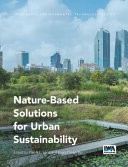Enhancing Sustainability of Constructed Wetlands for Agricultural Water and Nutrient Management Practices through Social Innovations

Constructed wetlands (CWs) have a long history of pollution control in urban but also in rural and agricultural settings. As one of the solutions to water and nutrient management issues in European agriculture, CWs were assessed in the European H2020 project WATERAGRI not just for their effectiveness but also for their role towards sustainability. In this chapter, we show different methods used to assess the effectiveness and sustainability of CWs by applying a rapid assessment, driver–pressure–state–impact–response analyses, and life-cycle thinking. We also demonstrate the need for an advanced inter- and transdisciplinary understanding of how sustainability, both as a concept and in its implications, is perceived by applying a Delphi analysis and an online questionnaire. The results show that CWs can be considered a sustainable measure for water and nutrient management in agricultural sites for their environmental benefits, which are the most highlighted by the scientific community and practitioners. However, findings also show that social benefits may indeed be the tipping point for these systems to be sustainable and that more research and insights are needed to highlight the role of social innovation.
